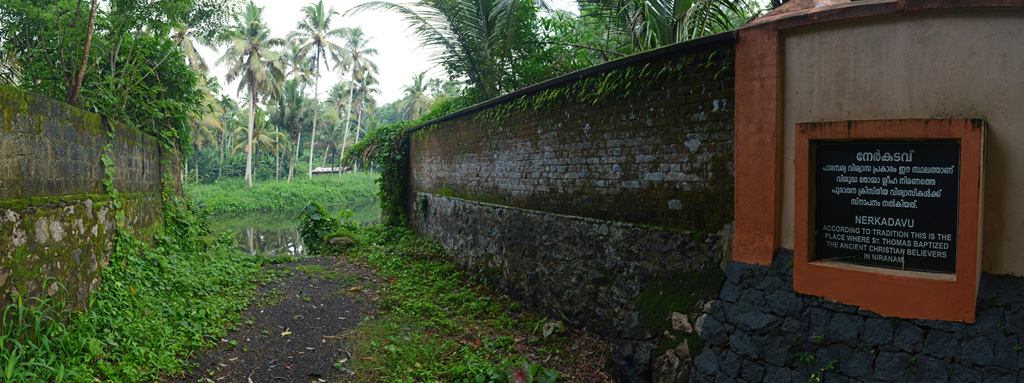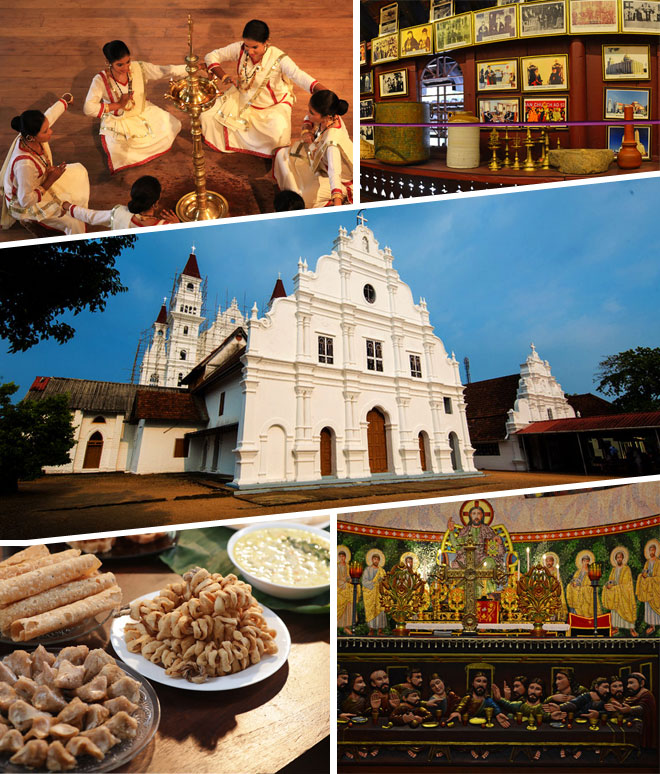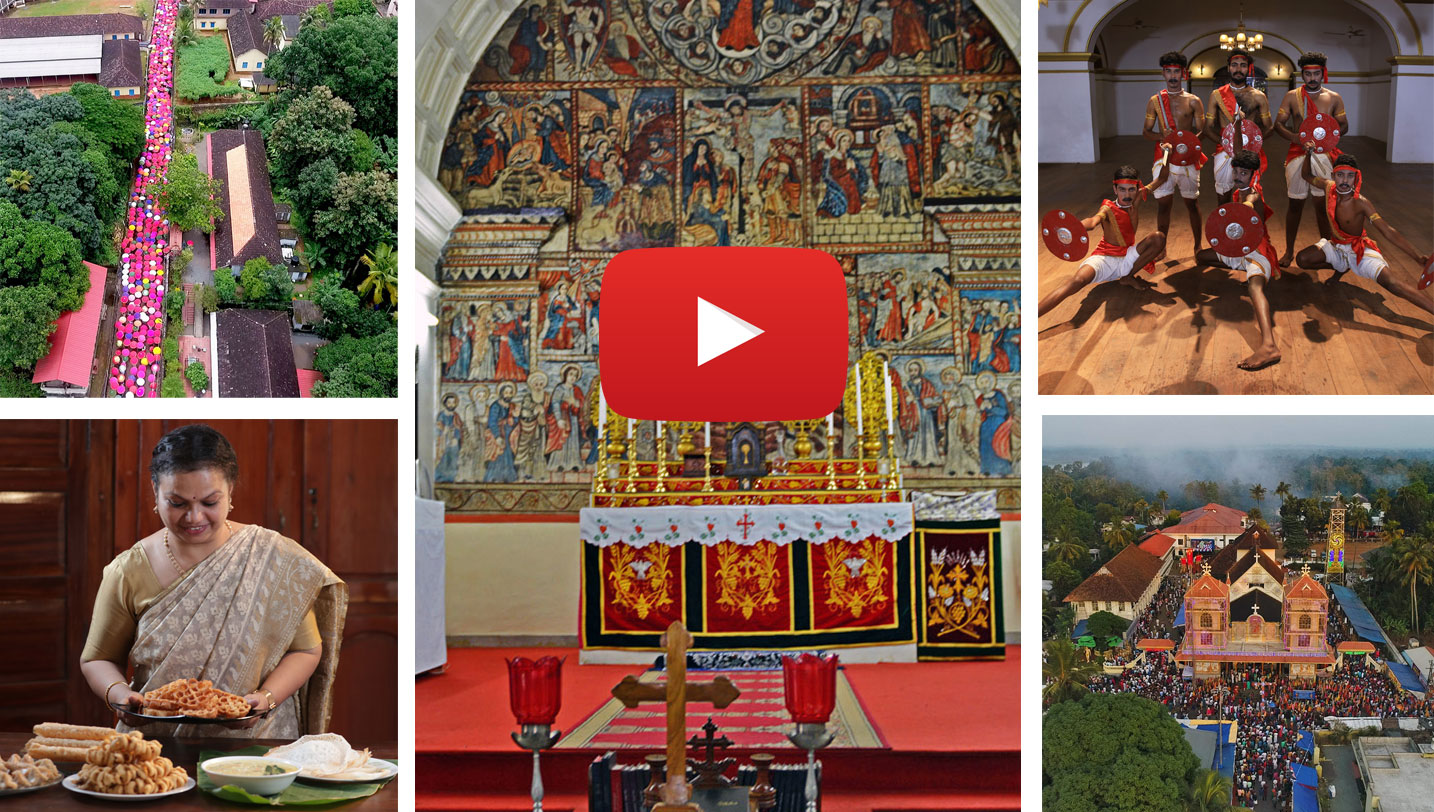The arrival of St. Thomas
_large.jpg)
Certain legends
The visit of St. Thomas is still a matter of dispute among historians. There are only very limited details about him in the Bible. He appears thrice in the Gospel of St. John (St. John 11:16, 14:5, 20: 25-29). The three occasions are the resurrection of Lazar, the Last Supper, and the resurrection of Christ. In the gospel, he is named as Thomas who was known as Didymus. There are no written references to his gospel activities. The oldest document in this score is the book Acta Thomae, written at Edessa in CE 2- 4 centuries. This book came to be written since some traders took the body of St. Thomas to Edessa. A Syrian scholar is said to be the author of this book set against the cultural background of Mesopotamia. As per the descriptions in this book, St. Thomas, on his first mission, reached the capital of the Parthian King Gondophares, who ruled Afghanistan and Punjab with Takshasila as capital, along with the trader Abbanes, and on his second mission, he travelled to a kingdom in South India ruled by a 1st Century dynasty. According to tradition, St.Thomas evangelized this area and then crossed over to the Coromandel Coast of Southeast India. He was killed while he was carrying out his mission at Mylapore near Madras. His body was laid to rest there and subsequently moved to Edessa in the fourth century and from there to Orthano in Italy.
_large.jpg)
The Kerala tradition links him with certain families and the founding of churches in certain places. The Christians of Kerala endorse it. Books like Veeradiyan Pattu, Margam Kali Pattu, and Ramban Pattu, that describe the Kerala tradition reiterate the founding of the Churches. The stanza, starting with “Arul Margathil” in Ramban Pattu, says that St. Thomas boarded a ship from Arabia and reached Maliyankara. Marco Polo has recorded that he visited the tomb of St. Thomas in Mylapore. It was the site of the saint’s martyrdom and had become a centre of pilgrimage for Christians and Muslims.
Certain Historical Facts
The mortal remains of St. Thomas were taken to Edessa and conserved in a church named after him, says Mar Ephrem (CE 363) in his book, Parishudhatmavinte Veena, written in Syriac. Mar Ephrem, who was born in Nisibis, spent his last days in Edessa. The remains were taken to Italy along with the mortal remains of martyrs from the Middle East, during the holy war. The bone of the right hand was brought to India with the permission of the Vatican. This is conserved at the church in Azhikode in Kodungalloor where St. Thomas first arrived in a ship.

Earlier, the gospel activities of St.Thomas in North India, as well as Gondophares were considered as mere fiction. The existence of this King has now been established by the coins recovered from Punjab, Sind, and Afghanistan (A. E. Medylcott, India and the Apostle Thomas). Dr. Bellew recovered a stone scripture, kept in the Lahore Museum, about the Parthian empire ruled by Gondophares. This stone scripture is known as Takht-i-Bahi stone. The regime of Gondophares begins in CE 46, i.e. during the first half of the First Century (Kudapuzha, Xavier, The History of Indian Church). This agrees well with the period of St. Thomas’s visit to India.
During 1289, sent by Pope Nicolas IV to India and China, John of Monte Carvino, a Franciscan friar, visited the Coromandel Coast and stayed in India for 13 months. He also stayed at San Thom where the tomb of St. Thomas stands (Yule, Henry and Cordier, Henri, Cathay and the way Thither). John of Marignolli, who visited India in CE 1348, has written about the Christians in Kollam. Nicholas de Conte, an Italian merchant, has described his visit to the tomb in CE 1441 and also about the Nestorians and Jews in Malabar (Major, R. H., India in the Fifteenth Century).
- The Tradition of St. Thomas
- The arrival of St. Thomas
- Seven and half Churches
- Post St. Thomas arrivals
- The scenario before the arrival of Gama
- Missionary Activities
- Descriptions of St. Thomas Christians
- The Padruodo
- Portuguese Forts
- Synod of Diamper
- Latinization of Churches
- Coonan Cross Oath
- Post Koonan Kurissu
- Establishment of churches
- Starting of Seminaries
- Anglo Indians
- Migrations to Malabar

